Romance. Adventure. Bickering. Mudslides. Alligators are ready to devour you at a moment’s notice. This is all at the heart of Romancing the Stone – the movie and the production. Before it became a hit with audiences – which took some time itself – the script was developed by a sole waitress…before landing at the feet of an Oscar winner before bouncing between studios before finding itself the victim of poor press before a miraculous recovery at the box office. With additional backstories of mended feuds, career skyrocketing, and tragic deaths, it reads like something out of a book – not those trashy paperbacks but almost something even more unbelievable: the making of Romancing the Stone.
So let’s find out: WTF Happened to this movie?!
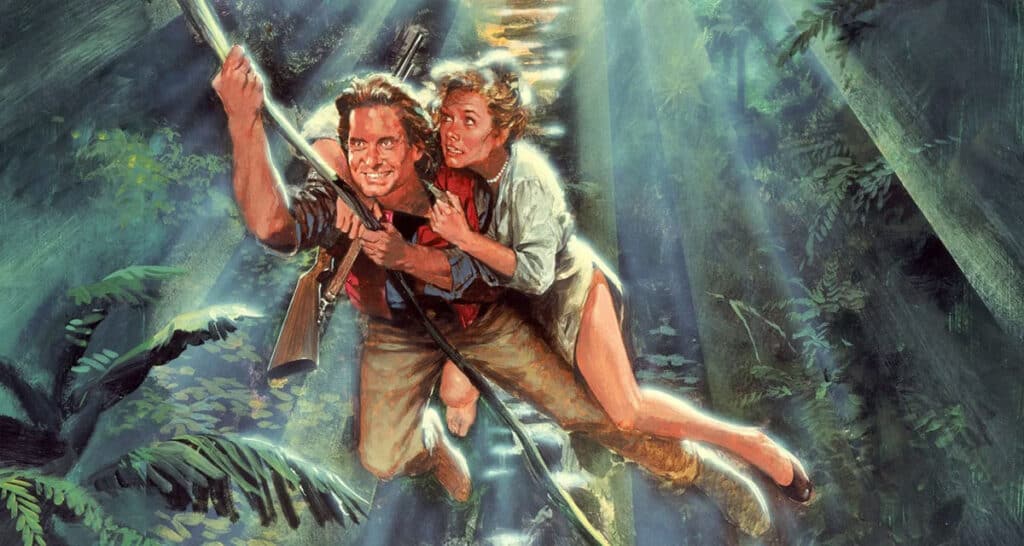
Romancing the Stone began where so many romances do: a diner! It was while working as a waitress in Malibu, California, in the late ‘70s that a then-unknown named Diane Thomas began writing her first screenplay, using extra time outside of Alice’s Restaurant to pen what would become Romancing the Stone, a sort of Raiders of the Lost Ark meets Danielle Steel. She shopped it immediately, with the script selling for $250,000 thanks to Michael Douglas, who had enough belief in the script and Thomas to want to put down such a large sum for a first-time screenwriter. As Douglas said, “I remember being criticized for paying so much money for a first-time screenwriter…I said, ‘Well, I don’t care if it was the first or the tenth time. If the material is good, then the material finds its own value.’”
He would also gift her a Porsche as recognition for her work. “It just had a spontaneity about the writing…She was not cautious. The script had a wonderful spirit about it – there was a total lackof fear to the writing. It worked.” Douglas also recruited director Robert Zemeckis because he wanted the energy of something like Used Cars, his second film after I Wanna Hold Your Hand.
A number of names circled the role, with Clint Eastwood, Paul Newman, Jack Nicholson, and Christopher Reeve all considered. Even closer was Sylvester Stallone, who opted to do Rhinestone instead (yikes!). And so in stepped Douglas himself to play bird smuggler Jack T. Colton, who the studio didn’t want because he wasn’t yet a star – despite a Best Picture Oscar for One Flew Over the Cuckoo’s Nest and a lead on The Streets of San Francisco.
Next came the role of romance novelist Joan Wilder. The role would originally go to Debra Winger (An Officer and a Gentleman, Terms of Endearment), but apparently bit Douglas after a night of slinging tequila. As Douglas recalled, “I break down intears and say, ‘I can’t go to the jungle with her – she bit me on the arm! I can’t do it – it’s not worth it!’ So they said, ‘OK, all right.’” And so the role went to Kathleen Turner, who made her sexy debut in Body Heat and showed her comedic chops in The Man With Two Brains. She also thought she fit in because she felt like a tomboy.
The only other key role–of smuggler Ralph–would go to Danny DeVito, who was Douglas’roommate in the ‘60s. Because of DeVito’s presence, more was added to the script to help flesh out his character. Word is that Bob Hoskins was offered the role, but Zemeckis would work with him later on in Who Framed Roger Rabbit.
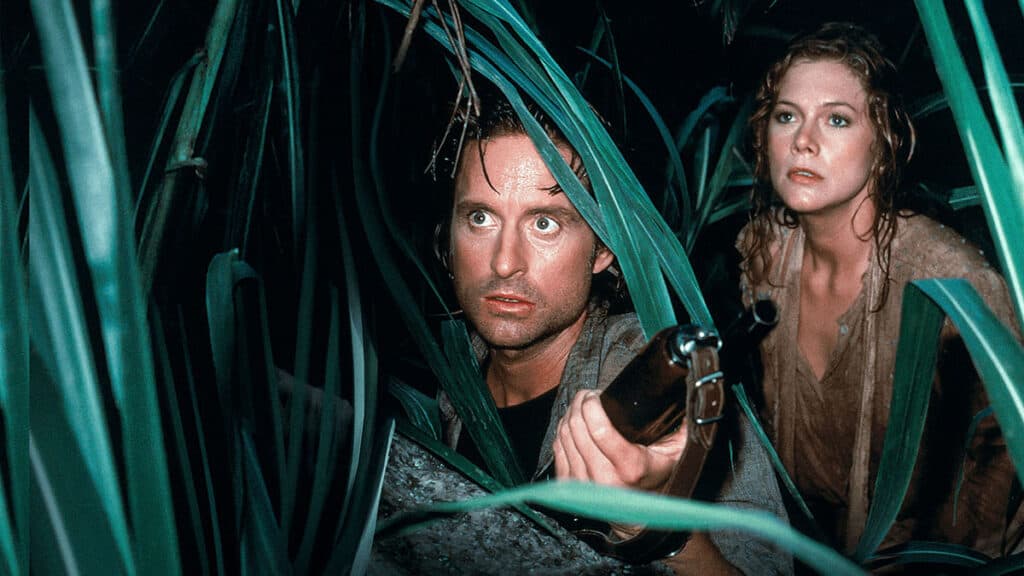
With the cast and director lined up, filming could begin on Romancing the Stone…But it wouldn’t begin in Colombia, where the movie was set, as the locale was nixed due to the ongoing drug trade and high murder rate. And so production set south to Mexico, with various locations in Mexico, including various locations in Veracruz (standing in for Cartagena) such as Tonayán and the Texolo Waterfall, Huasca de Ocampo in Hidalgo, Mexico City’s Zócalo, and the state of Durango. The destroyed bridge was an actual one that fell victim to an earthquake just outside of Xalapa, while the opening sequence was shot back in the States in Zion National Park. In addition to providing accurate enough stand-ins for Colombia, the locations allowed for isolation from the studio, who couldn’t come to the set and check in every day.
As with so many erected in foreign lands, the production had its ups and downs; even Douglas remembered it being “tremendously difficult to make”. The cast and crew were hit with extreme rain and mudslides, one of which left Turner with countless stitches. Douglas, too, had a run-in with nature when he was struck by an alligator’s tail (thankfully, the creature had its jaws wired shut). The alligator also attacked a trainer, taking him underwater by his hand; thankfully, his hand was saved after a hospital visit–and don’t worry, his Rolex was rescued as well.
Zemeckis had plenty of issues with the terrain, saying, “It was very, very tough…When the movie was over, I told my agent who gave me the script…if another script ever comes across your desk with a slug line that says ‘Exterior. Jungle. Night. Rain.’Never send it to me.”
He would clash with Kathleen Turner as well, with the actress recalling her director: “I remember terrible arguments doing Romancing. He’s a film school grad, fascinated by cameras and effects. I never felt that he knew what I was having to do to adjust my acting to some of his damn cameras — sometimes, he puts you in ridiculous postures. I’d say, ‘This is not helping me! This is not the way I like to work, thank you!” (Turner and Zemeckis mended their strife a few years later when the director cast her in Who Framed Roger Rabbit, voicing the sultry Jessica Rabbit.) Turner would have far better chemistry with Douglas, with rumors spreading that their romance may have spilled offscreen as well…
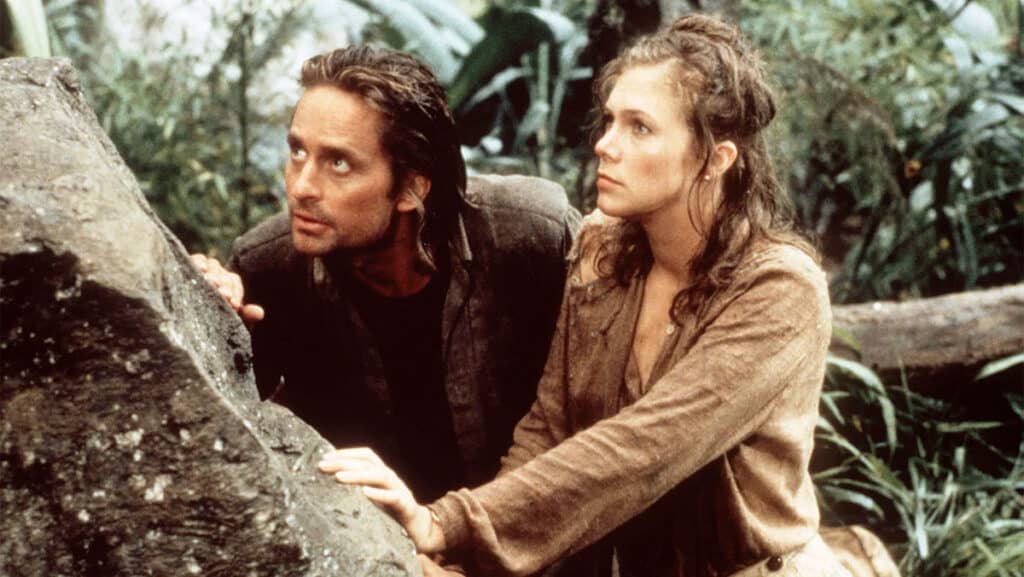
As production neared its end, Zemeckis hired Alan Silvestri to record a temp score–but Zemeckis loved his work so much that he kept it, marking the duo’s first pairing. And they have worked together on every one of Zemeckis’s films since!
It was now time for a test screening with the studio, particularly a crowd mostly comprised of execs. But their notes were fairly tame, with some revolving around developing Turner’s character more. Really, this was the best Zemeckis and company could get, considering there had been word that the production and Zemeckis were out of control.
How bad was the word of mouth from Mexico? Zemeckis–who was actually attached to direct right after–was fired from Cocoon while making Stone because Fox had so little faith in his romance adventure. Of course, following all of the buzz that eventually surrounded Stone, Fox invited him back…which he promptly declined. Cocoon would end up with Ron Howard, while Stone’s eventual success would land Zemeckis Back to the Future at Universal.
Romancing the Stone opened to $5.1 million on March 30th, 1984, at a weak #4, behind Police Academy, Greystoke, and Splash. It would peak at #2 in its fifth week, still behind Police Academy. But, not unlike Turner, it would prove to have some serious legs, taking in $76.6 million during its domestic run and a total worldwide haul of $115 million. That made it the 10th highest-grossing movie of the year domestically–trailing fares like Beverly Hills Cop, Star Trek III, and Terms of Endearment–and the fifth highest-grossing worldwide release of 1984 (not including IMAX’s Grand Canyon short), behind Gremlins, Ghostbusters, Beverly Hills Cop, and that year’s top earner, Temple of Doom.
It would go on to be nominated for the Best Editing Oscar. At the same time, Kathleen Turner took home theGolden Globe for Best Actress – Musical or Comedy (Turner was also a LAFCA winner) and BestMotion Picture – Musical or Comedy, beating out major players like Beverly Hills Cop, Ghostbusters, and Splash (and whatever the hell Micki & Maude is). Diane Thomas, meanwhile, earned a WGA nomination for what would be her only published screenplay.
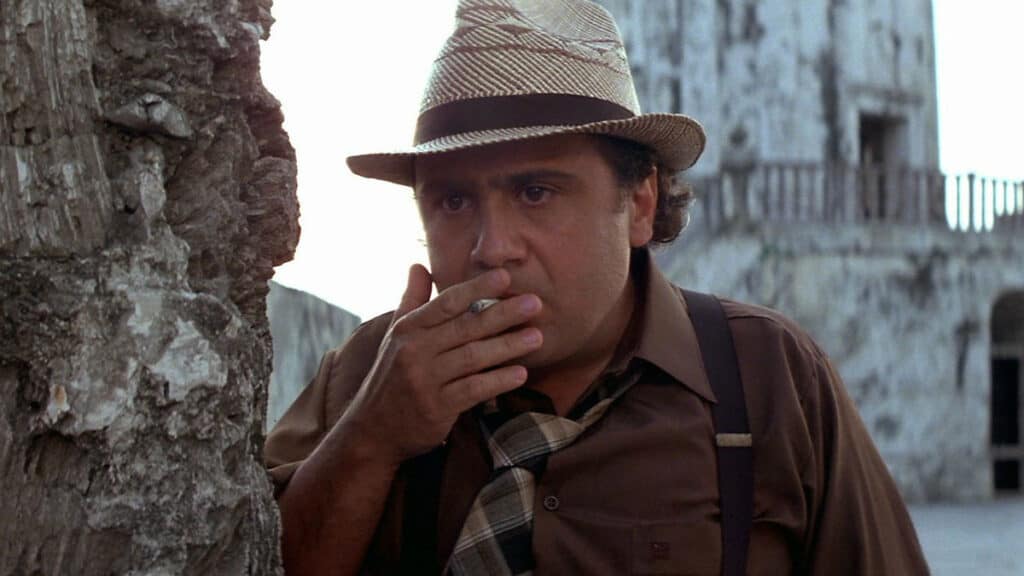
Tragically, in October 1985, Diane Thomas was the victim of a drinking and driving accident when the Porsche her boyfriend was driving hit a pole at 80 mph, just 15 miles from the restaurant she was working in when she wrote Romancing the Stone. It was the same Porsche that Michael Douglas gave her as a gift for writing such a brilliant script. Thomas was well on her way to being one of the most desired scribes in Hollywood, landing a job at Steven Spielberg’s Amblin, where she worked on Always and even a third, discarded Indiana Jones outing. Sadly, we’ll never know what she would have brought to movies after her heralded debut.
With Romancing the Stone proving to be a success, Fox greenlit a sequel for the next year: Jewel of the Nile. But a gem it was not: the budget doubled, Zemeckis had stepped aside for Cujo’s Lewis Teague (hey, had his own experience with alligators…), and Diane Thomas only did doctoring on the script. And Kathleen Turner hated this, saying of the script: “What had happened was that Romancing was so successful that Diane, who wrote the original script, evidently asked Michael for what he felt was a ridiculous sum to work on the sequel. So, instead, he went with these two guys, and what they came up with was terrible, formulaic, sentimental.” She and Douglas would reportedly swap script pages so they would at least like what they were reading. Turner herself tried to get out of the movie, but contractual obligations–and a $25 million lawsuit–forced her to stay on board. Jewel of the Nile grossed nearly identical numbers but was far less well-received than Romancing the Stone.
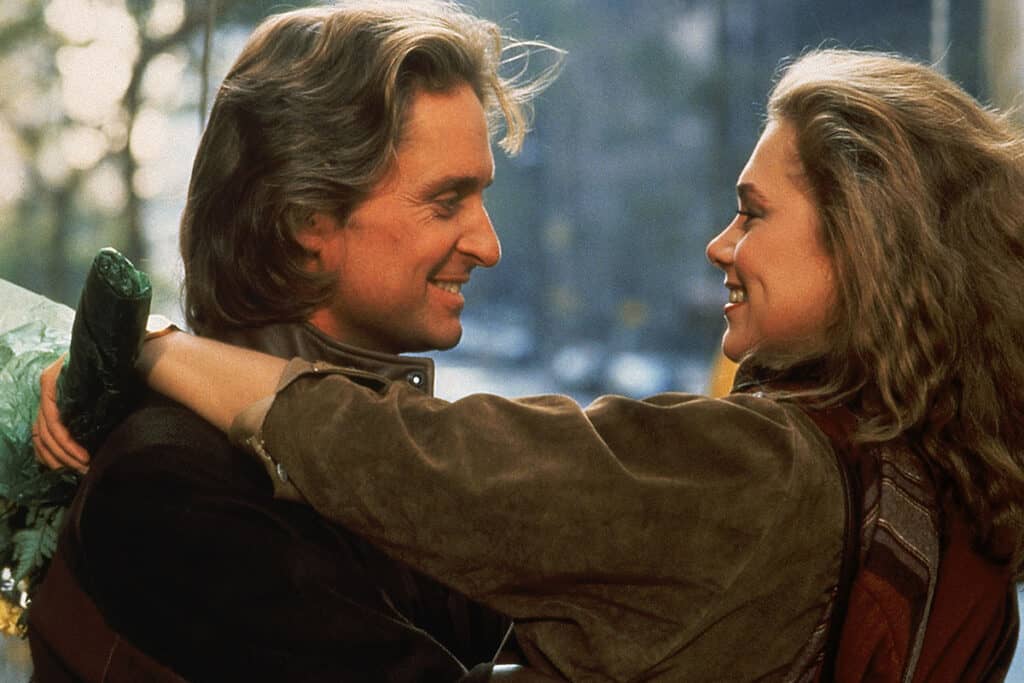
A third movie in the series, The Crimson Eagle–which would have continued the exploit of Jack and Joan, in addition to their teenage children, in Thailand–never moved forward. And the series remained placid until 2008 when Douglas announced the India-set Racing the Monsoon, which would have starred himself alongside his wife Catherine Zeta-Jones. Douglas said, “We will take our kids, and all of us will come there, set up camp in India, and shoot a film.” Oh, come on, Michael, this is Adam Sandler’s gimmick! Instead of an official third entry, fans would see Douglas, Turner, and DeVito reunite in 1989’s War of the Roses, with DeVito directing.
Not surprisingly, a television remake at NBC was in the works, with Taylor Kitsch or Gerard Butler set to co-star alongside Katherine Heigl. This never got off the ground, but the general concept was brought to the big screen in 2022’s The Lost City, with Channing Tatum and Sandra Bullock (yes, Bullock plays a romance novelist).
A sleeper hit upon release, Romancing the Stone remains a genuine charmer of 1980s cinema, and you probably won’t find too many adults from that generation who didn’t have a fondness for it. Retrospectively, Entertainment Weekly cited it in their case that 1984 was the greatest year in movie history (then again, they named Cannonball Run II, so…). No matter how many great films came out that year, Romancing the Stone is certainly in the discussion of aiding the year as one of the best, with its palpable onscreen chemistry and exciting, thrilling adventures–and come on, who doesn’t love Danny DeVito?






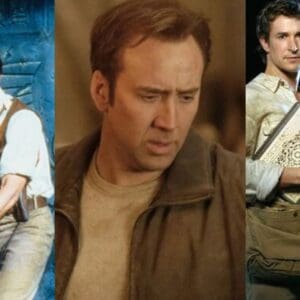
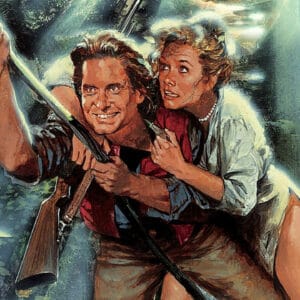












Follow the JOBLO MOVIE NETWORK
Follow us on YOUTUBE
Follow ARROW IN THE HEAD
Follow AITH on YOUTUBE